MegaFaces: Architect Asif Khan’s kinetic façade for the Sochi 2014 Winter Olympics
London-based architecture firm Asif Khan Studio is going for gold at the Sochi 2014 Winter Olympics. The MegaFaces pavilion – a 2000 sq m cube created for Russian telecom company Megafon – features a vast kinetic façade that contorts into 3D recreations of visitor’s faces, relayed via digital scans made in nearby photo booths.
British-born Asif Khan’s latest Olympic endeavour, like his first for London 2012 Games (he paired up with Pernilla Ohrstedt to create a 'musical instrument'), draws on popular culture. It is inspired by the pinscreens of old, as well as the instant appeal of digital portraiture (think Facebook, selfies, emoticons, Facetime), transformed into a piece of architectural. ‘My instinct was to try and harness that immediacy in the form of sculpture; to turn the everyday moment into something epic,’ explains Khan. ‘I’ve been thinking of this as a kind of digital platform to express emotion, at the scale of architecture.’
To realise the pavilion, the architect teamed up with Basel-based engineering firm iart and digital sculptor Scott Eaton. Comprising 11,000 actuators sitting underneath the installation's 'skin' – made from a stretchy fabric – the installation will reveal spectators' faces on the side of the building, three at a time, magnified at 3,500 times their original size up to a height of 8m.
MegaFaces is effectively the world's first three-dimensionally actuated large-scale LED screen. Each actuator, capped by an RGB LED light, acts as one pixel within the entire façade and can be controlled individually to change colour as part of an image or video, or extend by up to two metres to form part of a three-dimensional shape.
The concept of metamorphosis has pulsed at the heart of Khan’s architectural practice since the beginning. The installation for Sochi evokes the studio’s first ever project, West Beach Café in England’s Littlehampton, a cube-shaped build with an adaptable façade that enabled it to be transformed from a closed to an open space.
This latest undertaking is reflective of how Khan, who describes the pavilion as ‘a synergy between architecture and digital platform', has evolved his design language to respond to the ever-changing forms of new media. ‘The concept is to make people the face of the Olympics,’ adds the architect. 'At the same time it's a monument to all of us.’
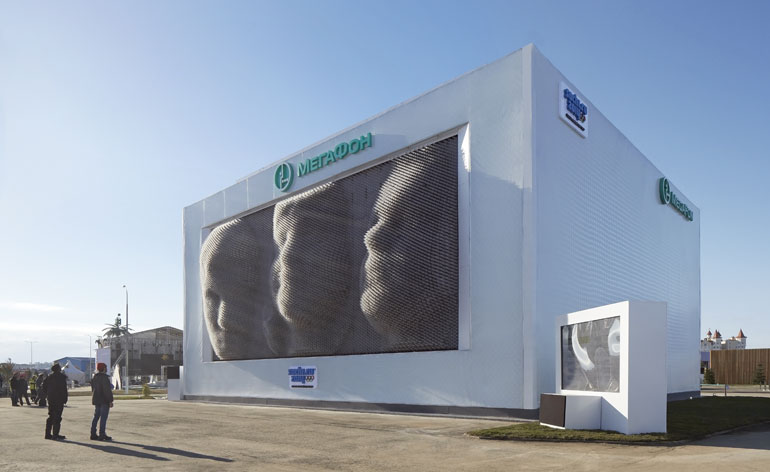
The MegaFaces pavilion – a 2000 sq m cube created for Russian telecom company Megafon – features a vast kinetic façade that contorts into 3D recreations of visitor’s faces, relayed via digital scans made in nearby photo booths

Comprising 11,000 actuators sitting underneath the installation's 'skin' – made from a stretchy fabric – the installation will reveal spectators' faces on the side of the building, three at a time, magnified at 3,500 times their original size up to a height of 8m
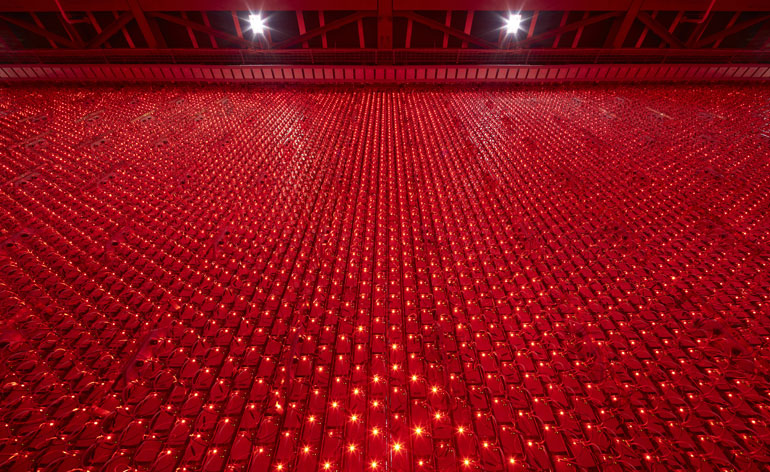
Each actuator, capped by an LED light, acts as one pixel within the entire façade and can be controlled individually to change colour as part of an image or video
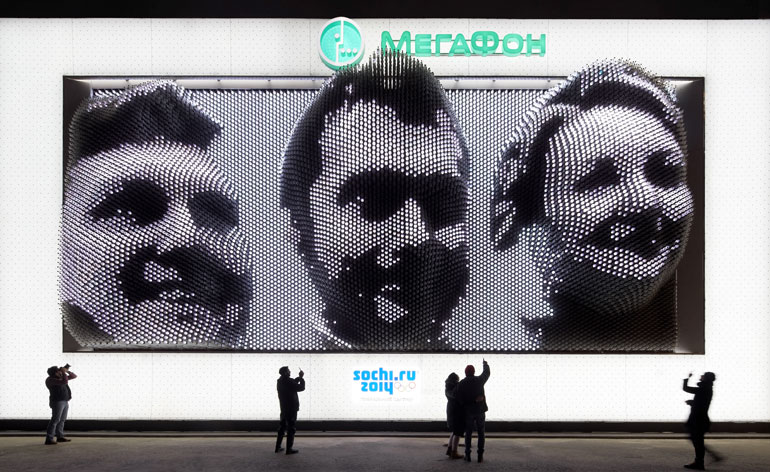
MegaFaces is effectively the world's first three-dimensionally actuated large-scale LED screen
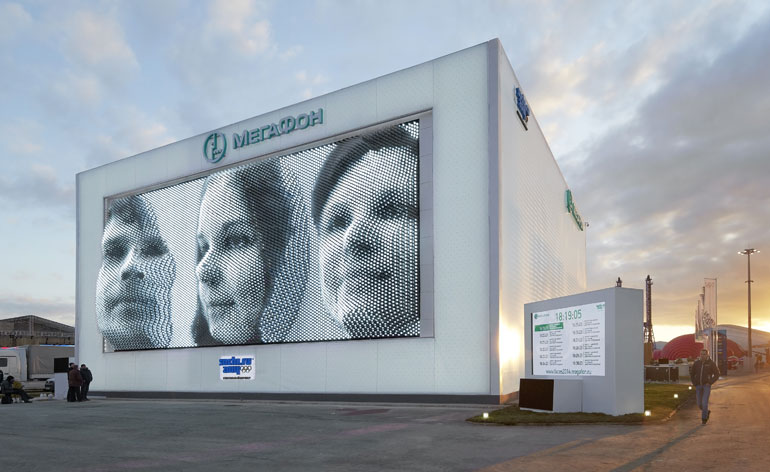
The pinscreen-style monument has been constructed at the entrance of the Sochi Olympic Park
Receive our daily digest of inspiration, escapism and design stories from around the world direct to your inbox.
-
 Own an early John Lautner, perched in LA’s Echo Park hills
Own an early John Lautner, perched in LA’s Echo Park hillsThe restored and updated Jules Salkin Residence by John Lautner is a unique piece of Californian design heritage, an early private house by the Frank Lloyd Wright acolyte that points to his future iconic status
-
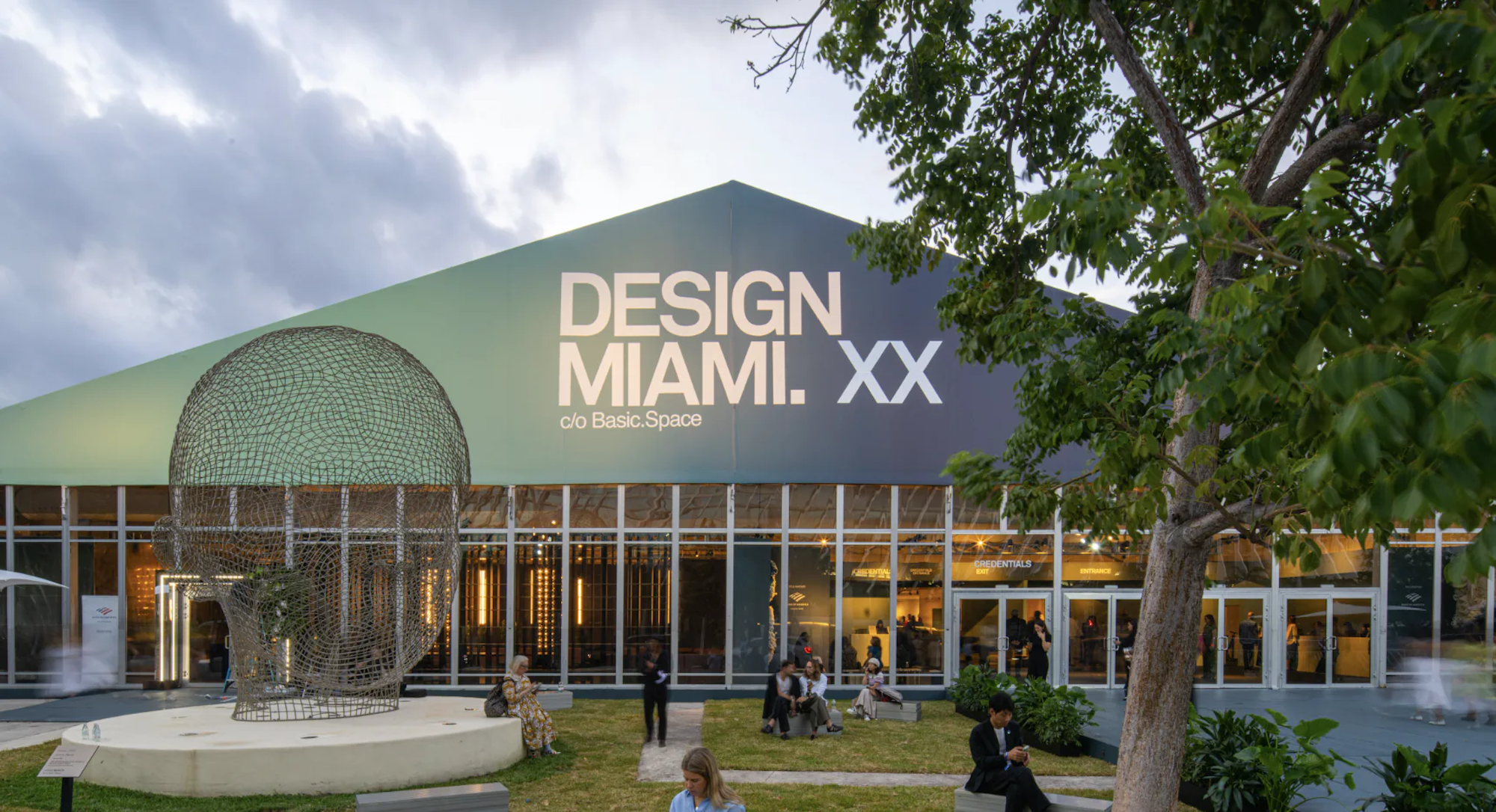 20 things that positively delighted us in and around Design Miami this year
20 things that positively delighted us in and around Design Miami this yearFrom covetable 20th-century masterpieces to a tower made from ceramic pickles, these were the works that stood out amid the blur of Art Week
-
 Montcalm Mayfair opens a new chapter for a once-overlooked London hotel
Montcalm Mayfair opens a new chapter for a once-overlooked London hotelA thoughtful reinvention brings craftsmanship, character and an unexpected sense of warmth to a London hotel that was never previously on the radar
-
 Exhibit Columbus to explore middle America and beyond
Exhibit Columbus to explore middle America and beyondThe 2020-2021 Exhibit Columbus theme and its J. Irwin and Xenia S. Miller Prize recipients line-up have just been revealed, placing the focus on the ‘middle city' during the upcoming annual Indiana architecture event
-
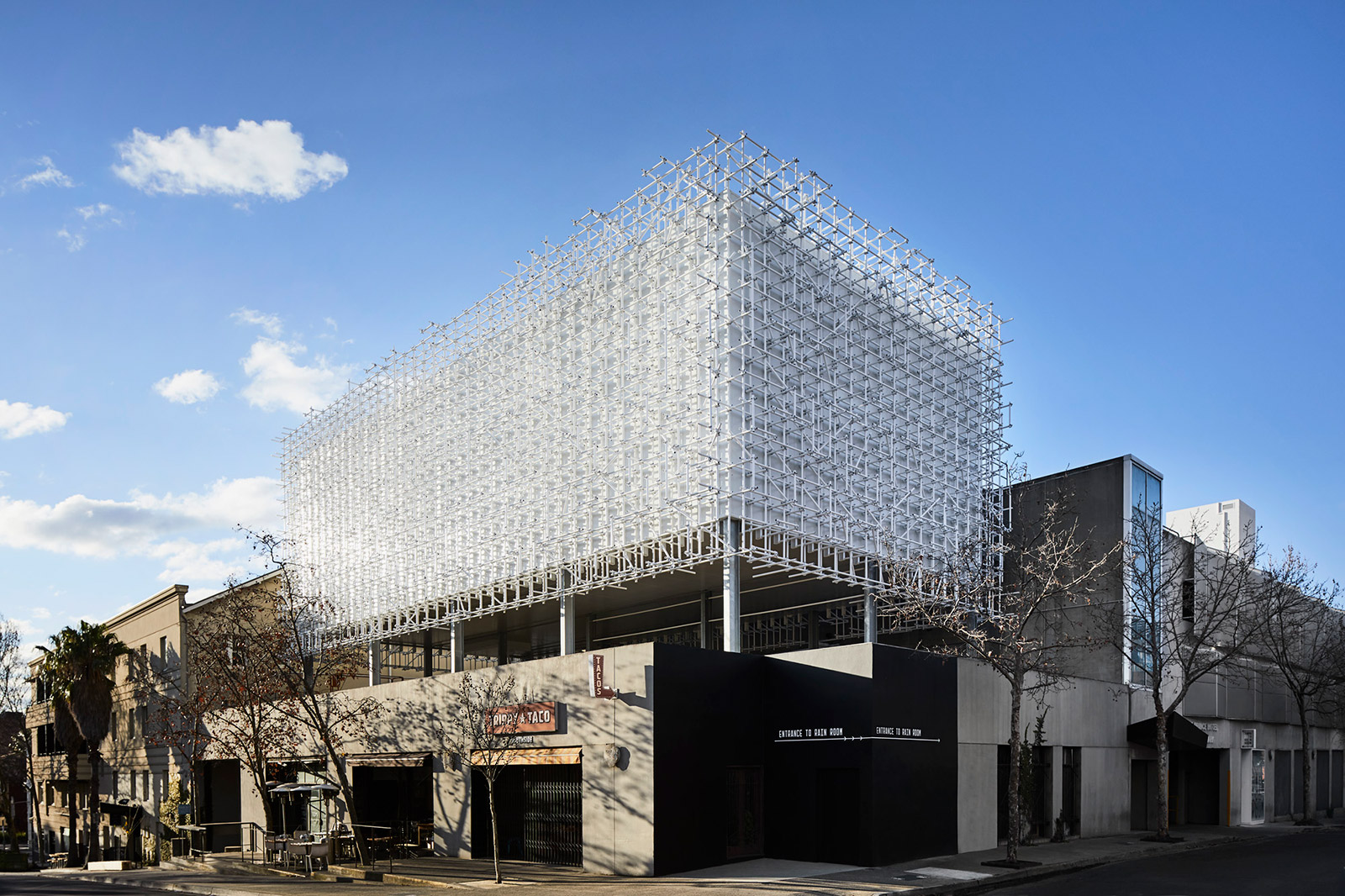 A storm is brewing inside March Studio’s cloud-like pavilion in Melbourne
A storm is brewing inside March Studio’s cloud-like pavilion in MelbourneRandom International’s Rain Room installation makes its Australian debut
-
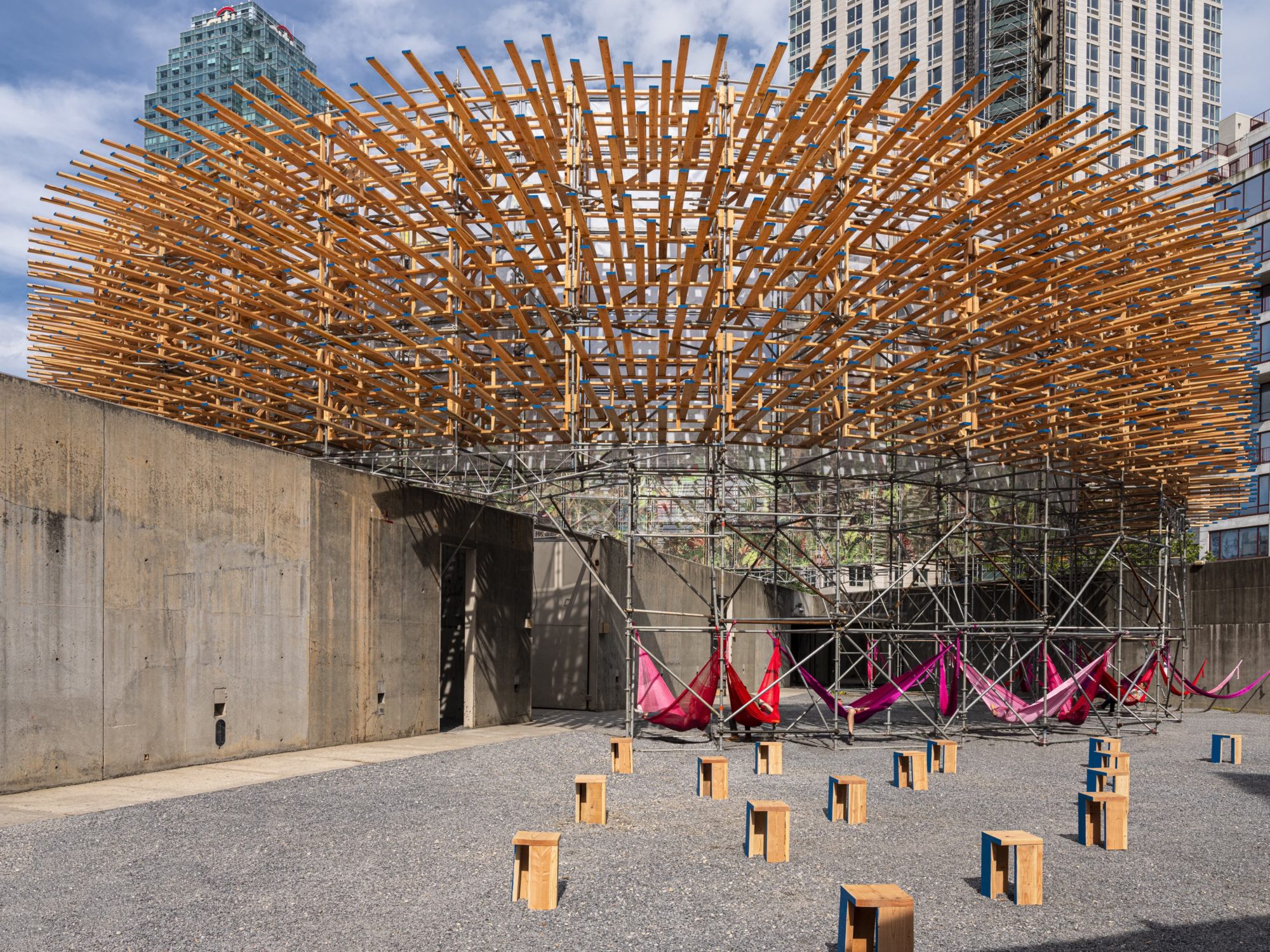 Pedro & Juana’s junglescape installation for MoMA Young Architects Program opens
Pedro & Juana’s junglescape installation for MoMA Young Architects Program opens -
 Studio MOTO and Hans Op de Beeck clad a villa in rubber
Studio MOTO and Hans Op de Beeck clad a villa in rubber -
 From an urban cabin in Los Angeles to co-living in Shanghai, MINI Living investigates the future of dwelling
From an urban cabin in Los Angeles to co-living in Shanghai, MINI Living investigates the future of dwelling -
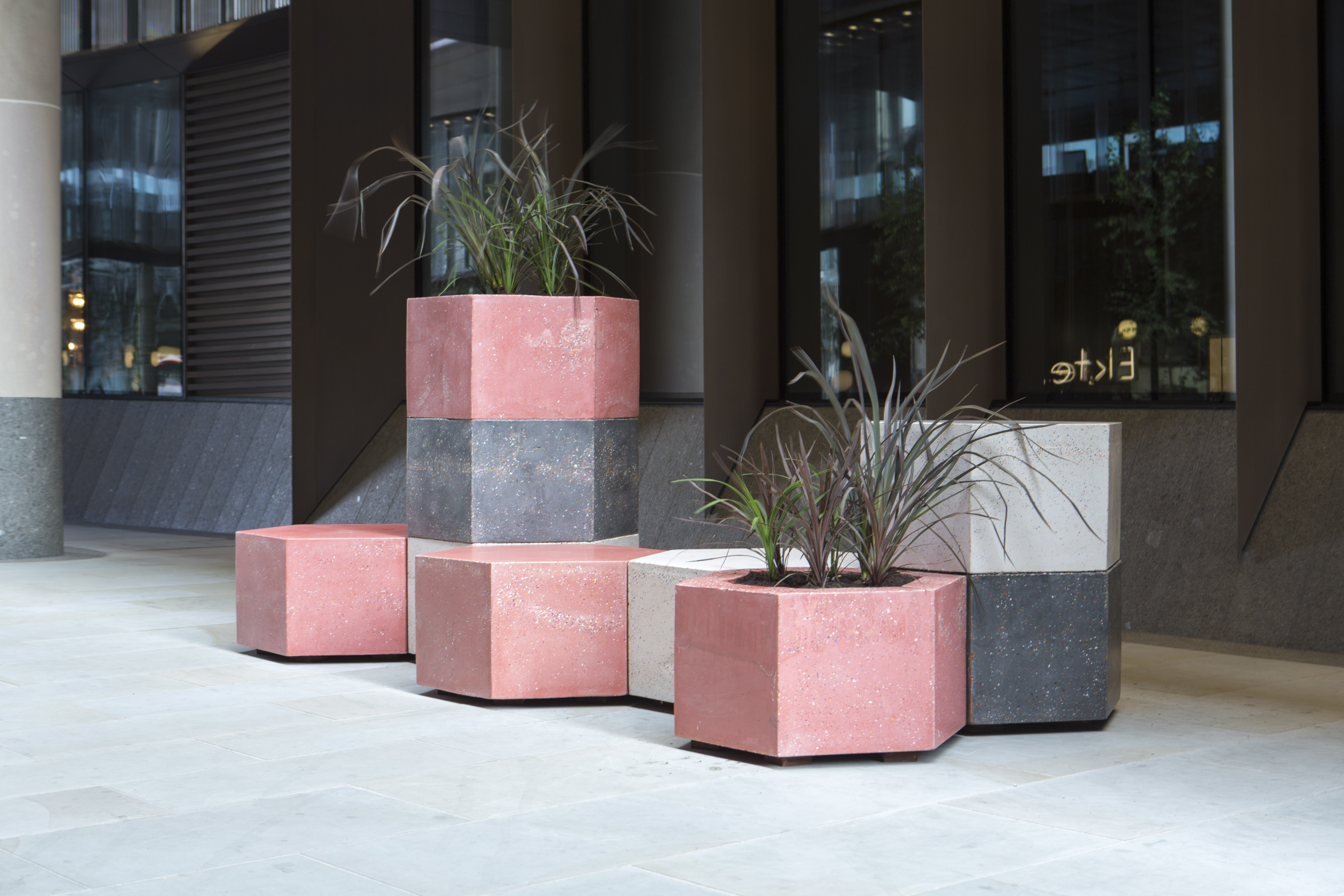 Take a seat: City Benches winning designs revealed during LFA
Take a seat: City Benches winning designs revealed during LFA -
 Jenny Sabin and Constructo team up for immersive installation in Chile
Jenny Sabin and Constructo team up for immersive installation in Chile -
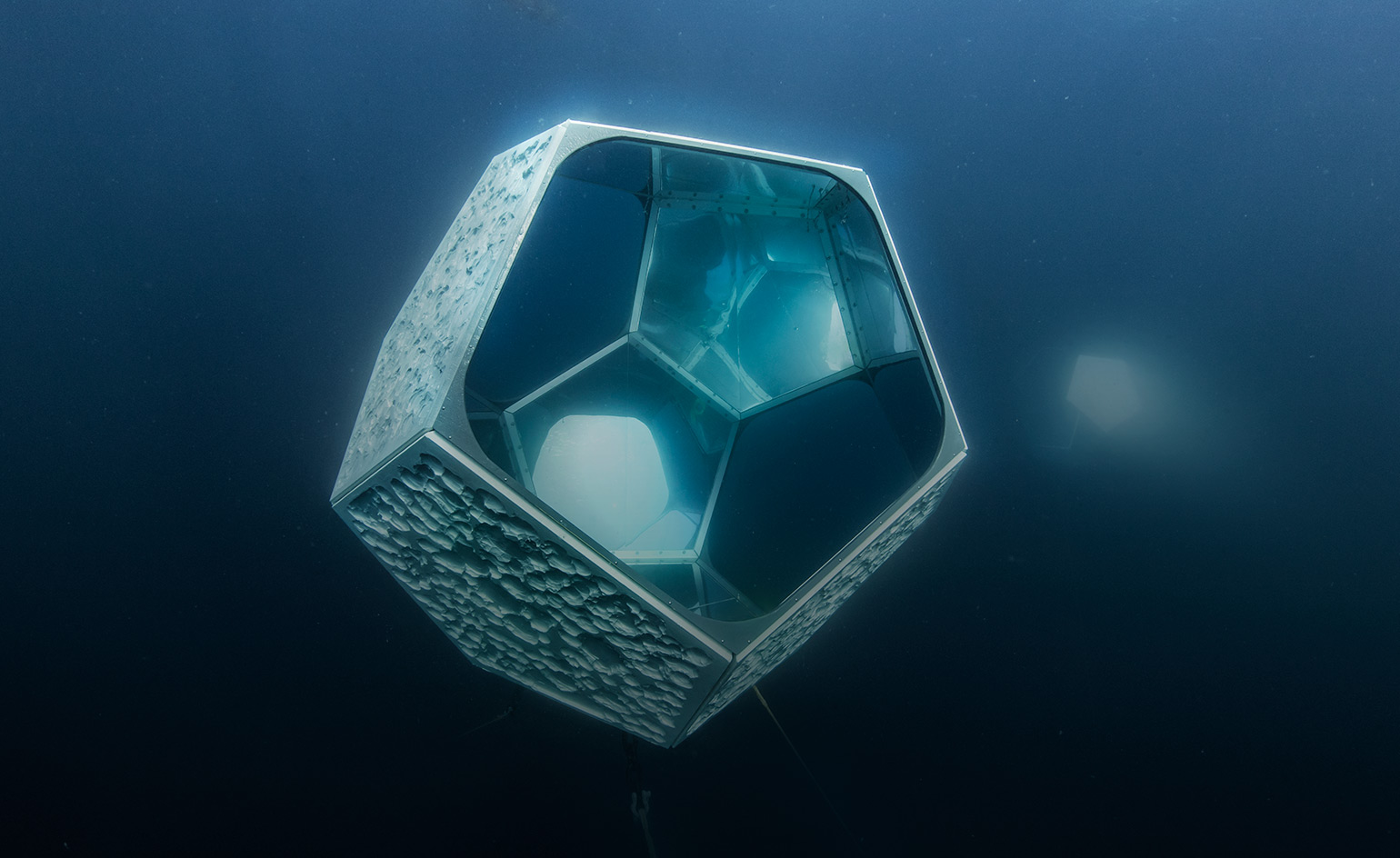 Pacific pavilions: Doug Aitken and Parley for the Oceans take art under the waves
Pacific pavilions: Doug Aitken and Parley for the Oceans take art under the waves